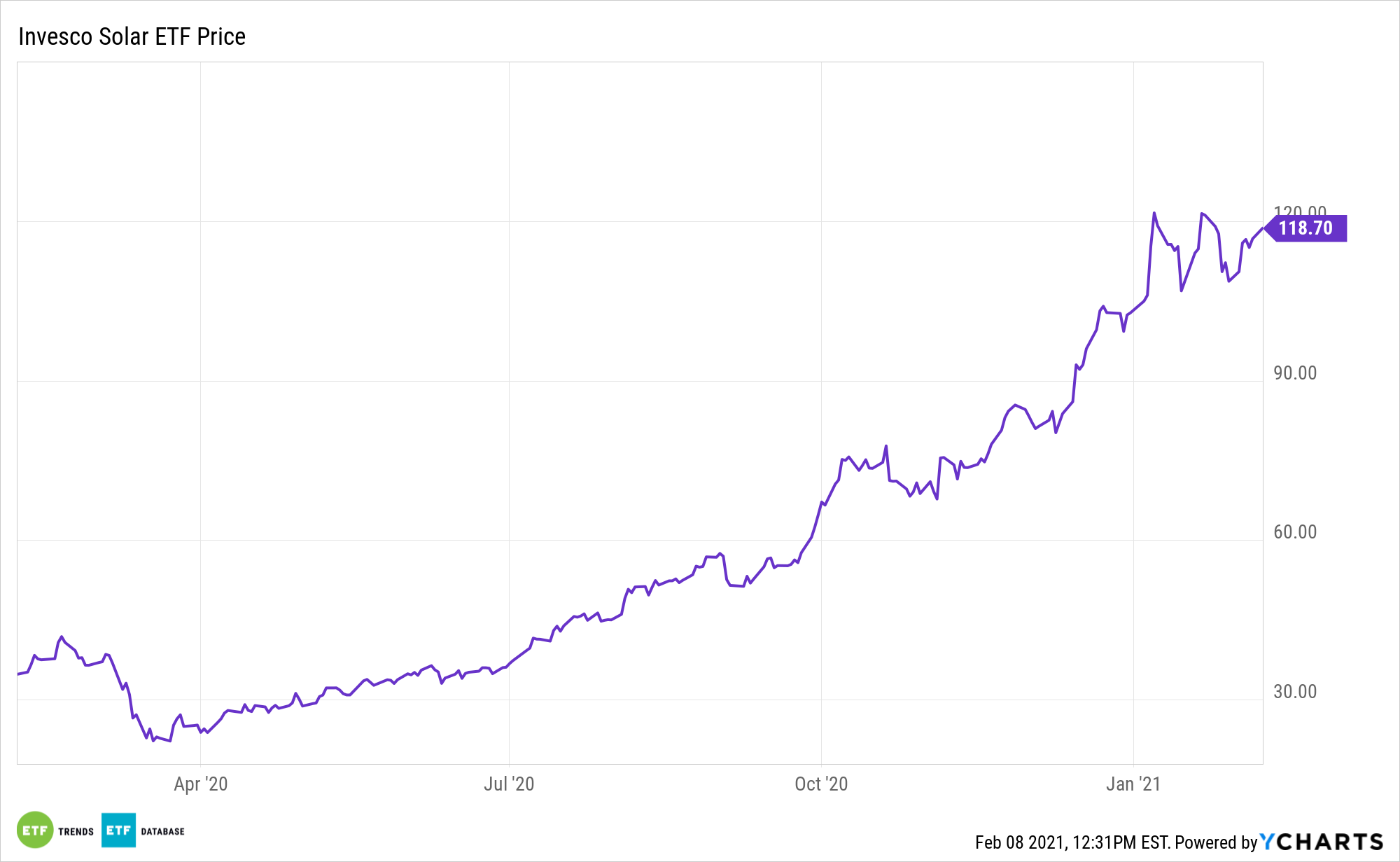The Invesco Solar ETF (TAN) is getting plenty of attention as one of the best-performing exchange traded funds over the past year, but the truth is TAN has been a star for some time, returning 409% over the past three years.
TAN, which debuted back in 2008, seeks to track the investment results of the MAC Global Solar Energy Index, which is designed to provide exposure to companies listed on exchanges in developed markets that derive a significant amount of their revenues from solar power equipment producers, including ancillary or enabling products.
While plenty of political tailwinds are priced into solar stocks and TAN, some market observers believe these names can continue climbing.
“It became clear early in the pandemic that solar wouldn’t just weather this difficult time, but possibly thrive during it. By mid-December, the U.S. was projected to install a record 19 gigawatts of new solar capacity last year, according to Wood Mackenzie and the Solar Energy Industries Association,” reports Brian Eckhouse for Bloomberg.

The TAN ETF: Tantalizing Investors
Covid-19 certainly did a number on business sectors across the spectrum, but one area that didn’t suffer was electricity generation via wind and solar power. In fact, the use of wind and solar for electric power has doubled in the last five years.
Environmental, social, and governance (ESG) is becoming an integral part of the investment space and as more investors clamor for funds that home in on these initiatives, ETF providers are scrambling to give the people what they want.
“Meanwhile, a sustainability-focused index that includes some solar companies, the WilderHill Clean Energy Index, last year surged more than 200%, topping the 58% gain in 2019. California-based SunPower Corp. rose as much as 14% on Friday, and is up about 70% this year. And the underlying drivers propelling clean tech look sturdy in the near-term: supportive policies in Europe and the U.S., a push to green electric grids as well as trillions of dollars in funds focused on the energy transition,” according to Bloomberg.
Boosting the long-term case for TAN are data confirming solar and wind installation prices will continue to decline in the coming decade. Renewables prices could increase due to the coronavirus, according to some market observers, but the consensus appears to be that the spike will be short-lived, if it arrives at all.
For more news, information, and strategy, visit the ETF Education Channel.
The opinions and forecasts expressed herein are solely those of Tom Lydon, and may not actually come to pass. Information on this site should not be used or construed as an offer to sell, a solicitation of an offer to buy, or a recommendation for any product.








